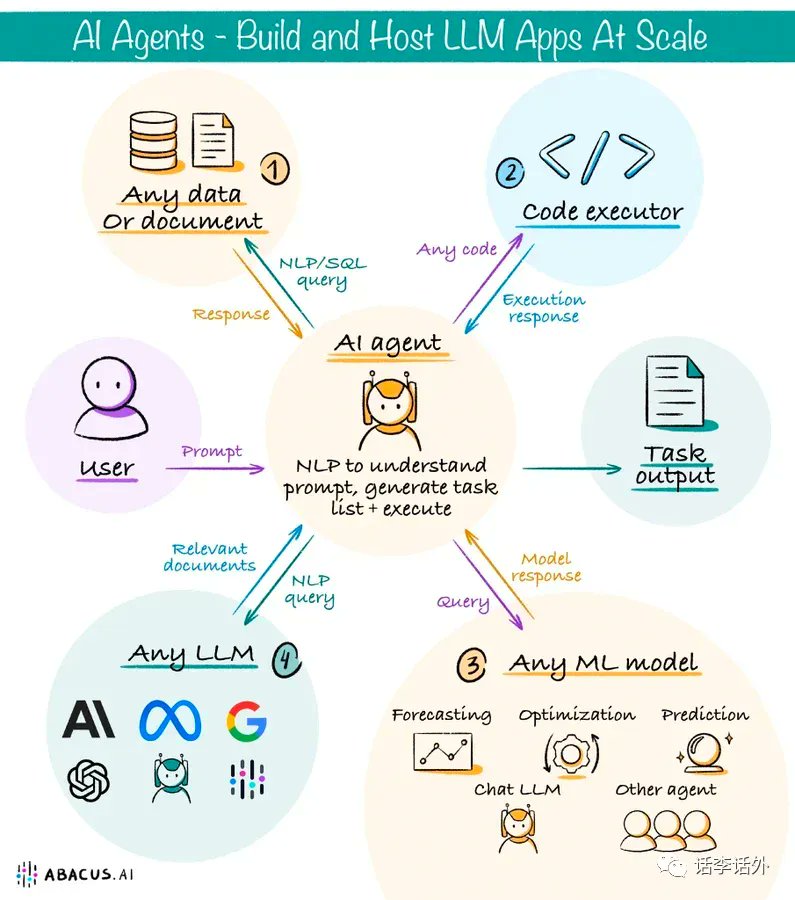Two days ago, at an offline event in Hong Kong, the host asked me to bring some Alpha for everyone. Without hesitation, I recommended $OLAS, which was trading at over $5 at the time, to everyone I met. Today, it has surged to nearly $7.3, just a step away from its all-time high. It can be considered as a live red packet. So, what exactly are they doing?
1) @autonolas Introduction:
Autonolas is a platform designed for the cryptocurrency field, providing an AI agent development toolkit to help developers complete various tasks more easily. The platform aims to simplify the development process and bridge the gap between on-chain and off-chain worlds, enabling a more seamless, efficient, and scalable way to utilize external data and services in Dapps.
Autonolas consists of three main components: a developer toolkit, a set of protective software and smart contract systems that reward contributions, and a governance structure for managing the ecosystem. It offers unique services, such as extending the functionality of smart contracts, which other platforms do not possess. It is considered to be a more innovative project than smart contracts.
2) Team Background & Financing:
Autonolas' team consists of 16 members, and CEO David Minarsch is a graduate of the University of Cambridge and was a member of https://t.co/0QOVOYoGSW team, where he was responsible for AI agent work for $FET.
The latest information is that the development team Valory completed a $4 million financing in 2022, led by True Ventures, with other investors also participating.
3) Market Value:
Currently, the token price of $OLAS is approximately 7.3 USDT, with a circulating market value of about $310 million. Compared to the approximately $4.5 billion market value of $TAO and $FET, $OLAS still has significant growth potential (assuming the AI wave continues).
4) Differences from Fetch:
Both $FET and $OLAS allow for the deployment of AI agents and use their own economic agent framework. The founder of $OLAS, David Minarsch, was a member of $FET. The difference between the two is that $FET focuses more on deploying automated tasks to improve efficiency, while $OLAS focuses on co-ownership of AI agents and autonomous services for off-chain operations. $OLAS provides a broader application and multi-agent task toolkit, while $FET focuses on single-agent tasks such as booking services or business searches.
5) Technical Features:
Autonolas integrates AI into web3 using its technology, not only supporting application construction and development but also allowing developers to gain economic returns in the process. This model closely links the practicality of the code with the token value, encouraging innovation.
In a broader range of use cases, Autonolas' AI agents can be used in various processes of cryptocurrency projects, whether for large-scale code operations or detailed process management. Importantly, Autonolas is not limited to a specific blockchain and is considering expansion to other platforms, such as Arbitrum. Additionally, Autonolas links with the TAO network through APIs, using Bittensor's decentralized AI models to complement each other.
Autonolas is also committed to unlocking the potential of off-chain services, creating services that can freely interact on-chain and off-chain. This expands the functionality of smart contracts, allowing interaction with the off-chain world without human intervention, bridging the gap between Web2 and Web3.
Autonolas' compatibility and off-chain extension capabilities make it a key force in the AI field. It not only enriches its own tools and products but also provides value-added services to other projects, expanding the scope of AI agents into broader domains.
6) Token Economics and Distribution:
Their token economics is very complex. Over the next ten years, Autonolas plans to issue a total of 10 billion $OLAS tokens, with approximately 4.6 billion still unissued. Currently, about 42 million tokens are in circulation. Notably, nearly half of the tokens will be used to reward developers who contribute high-quality code to the ecosystem, demonstrating Autonolas' emphasis on excellent code and positive ecosystem growth. Looking ahead, with the issuance of the remaining tokens, we expect to see rapid development of the Autonolas ecosystem. Additionally, in terms of the inflation rate, the first three years have relatively more new tokens issued, but it is still a reasonable portion. Most of the newly issued tokens are bonded, and although the team holds half of them, they are locked until 2026.
7) Major Updates:
Autonolas' recent major update is the launch of staking, marking an important evolution of the protocol itself. They use a governance model called PoAA, which rewards promising projects and helps balance the generation of new tokens. The team believes that this staking mechanism will provide a solid foundation for building a large AI intelligent economy and will provide stronger economic support for Autonolas.
Next, Autonolas will focus on improving the security of the protocol, launching a series of structured plans (Build-A-PoSe), and implementing the Triple Lock protocol upgrade through workflows. Starting from June 2023, Autonolas began updating their progress on Twitter every week (you can click here to view: https://t.co/SYOF8hi8M7), and has been consistent in doing so, demonstrating their dedication and ongoing efforts.
In summary, Autonolas aims to become a unified network that includes AI, oracles (using AI to predict and feed prices through inheriting large data centers), cross-chain communication, and other off-chain services, bridging the gap between on-chain and off-chain. A dark horse in the industry will eventually be discovered. Don't forget to like and retweet.
AI


免责声明:本文章仅代表作者个人观点,不代表本平台的立场和观点。本文章仅供信息分享,不构成对任何人的任何投资建议。用户与作者之间的任何争议,与本平台无关。如网页中刊载的文章或图片涉及侵权,请提供相关的权利证明和身份证明发送邮件到support@aicoin.com,本平台相关工作人员将会进行核查。




